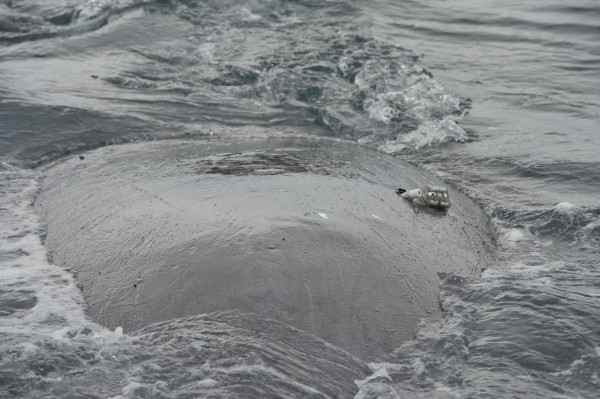Bowheads and breaking ice
Originally posted on WWF’s Thin Ice Blog.
As southern Canada starts switching on the air conditioning units and breaking out the fans in late June, the Arctic sea-ice is still there according to the satellite snapshots. But such technology can now tell us even the depth of the sea-ice – and that is what counts at least as much as the area of ocean with ice cover, at least from the point of view of marine wildlife like the ice-evolved bowhead whale! Especially towards the southern edges of the ‘Arctic’ sea-ice thickness has been dropping dramatically in the past decade – meaning that it melts earlier each spring, which increases the length of the open-water summer period.
The amazing compact technology now packed into a mobile-phone sized transmitter unit, and attached to the 100-tonne bowhead whales, has in recent years been able to give conservation science and decision-makers alike invaluable facts about where the whales spend their time, and hence help identify and protect these most special areas.
The stunning news last month is that bowhead whale 114495 (currently off Southeast Baffin Island in areas of ever-opening summer Arctic ocean) has had its radio transmitter device on for 2 years now – and its still transmitting vital information back to the scientists via orbiting satellites.
WWF is excited to be able to help share these spatial data. These whales move a lot, but they home-in on a relatively small number of very special areas for doing key things like raising their dependent young, feeding, and resting safely well out of reach from their main predator – killer whales.
Knowing where these key areas are for bowheads and other magnificent Arctic wildlife still in their natural habitats is crucial as our society plans for future increased human activities like commercial shipping, oil-gas exploration, and large-scale mining and ore shipment, and commercial fishing.


